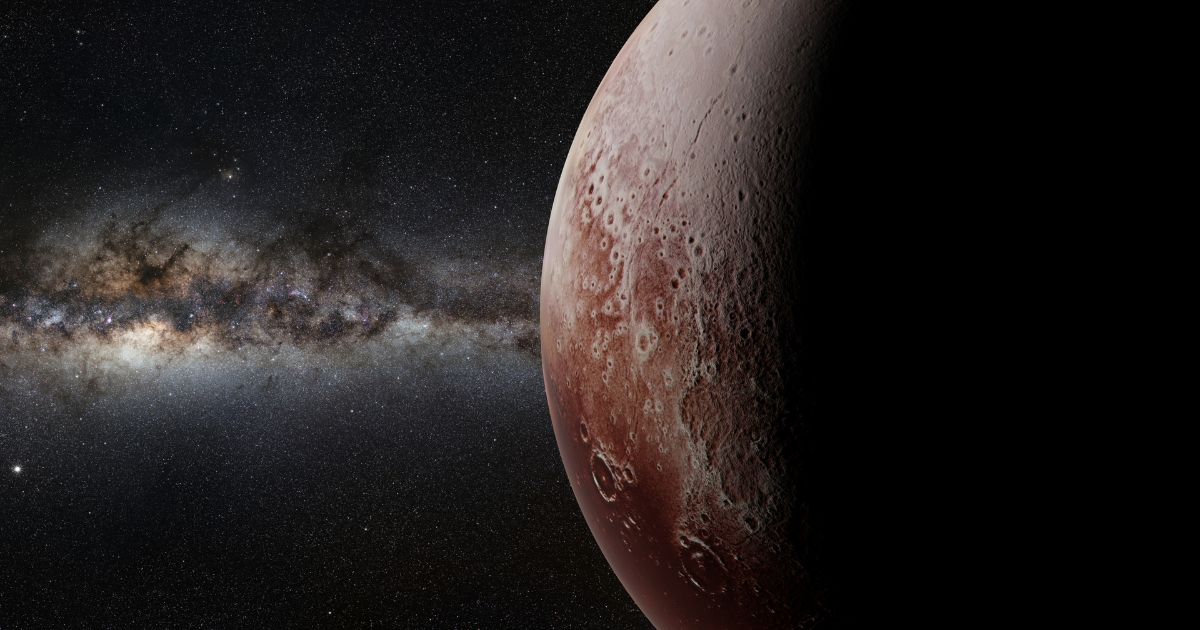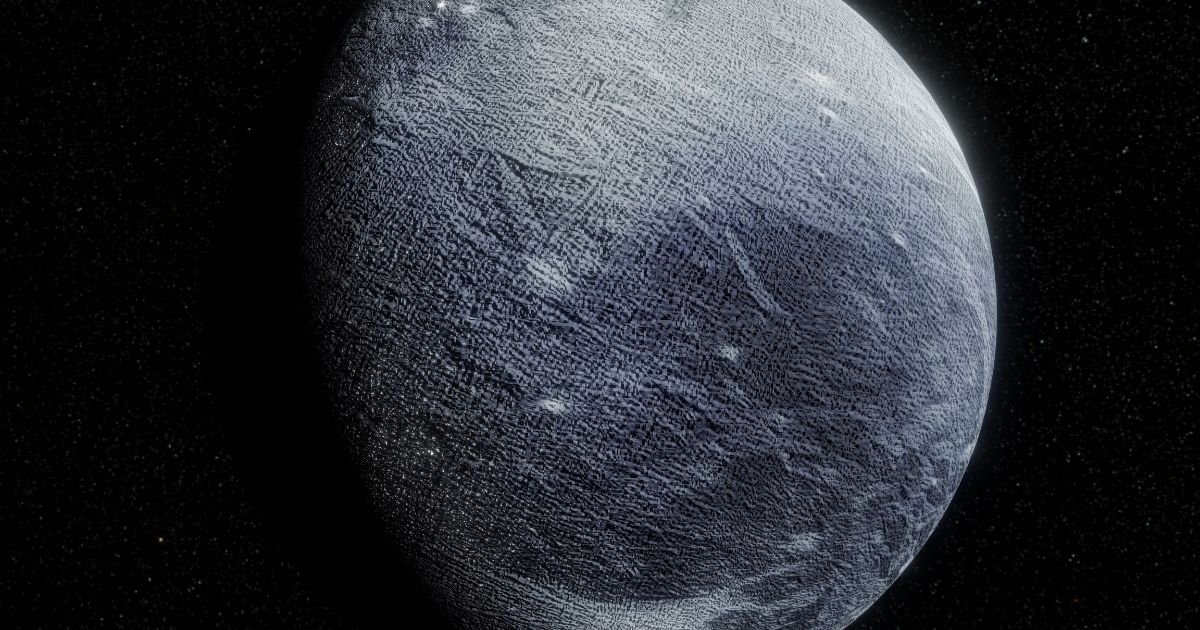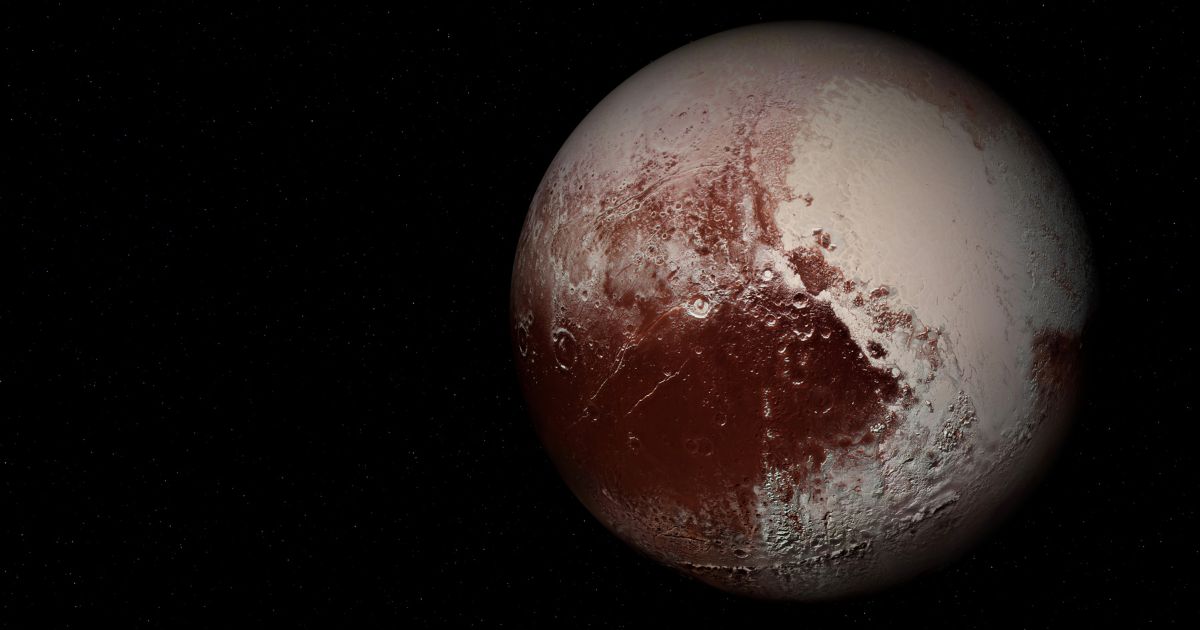The most well known object in the solar system that is not a planet, Pluto is a fascinating yet mysterious object. It was once a planet then reclassified to a dwarf planet, Pluto has been through it all. Despite not having the title of planet, Pluto offers many unique and crazy facts that will have you on the edge of your seat!

Pluto with a view of the Milky Way
35+ Fun Facts about Pluto for Kids!
Pluto is the most well known dwarf planet
It was initially classified as a planet until it lost the title in 2006
It was discovered in 1930 by Clyde Tombaugh, a research assistant
Pluto is the 9th largest object to orbit the Sun
Pluto is named after the Roman god of the underworld, originally given by an 11 year-old girl
Pluto has a diameter of 1,474 miles (2377 kilometers)
The average temperature is -387 degrees Fahrenheit (-233 degrees Celsius)
The lowest recorded temperature was -400 degrees Fahrenheit (-204 degrees Celsius)
Pluto’s highest ever temperature was -360 degrees Fahrenheit (-218 degrees Celsius)
It is, on average, 3.7 billion miles away from the sun
It orbits in the opposite direction as Earth
Pluto is smaller than the moon
The country of Russia is about as big as Pluto’s surface area
On Pluto, 100 pounds turns into 7 pounds! It’s gravity is super weak
Pluto’s surface has mountains, canyons, and dunes
It takes about 248 years for Pluto to orbit the Sun
Since its discovery, Pluto has yet to make an orbit around the sun
One day on Pluto is a little over 6 Earth days
Pluto has a very thin atmosphere primarily made of nitrogen, methane, and carbon monoxide
It’s atmosphere creates a blue sky during the day
The farther Pluto gets from the sun, the more its atmosphere has a chance of collapsing
Pluto has 5 moons
They are Charon, Styx, Nix, Kerberos, and Hydra
Charon is the largest of the 5, it is half the size of pluto
Pluto and Charon’s orbital periods are synced, so they always face each other in the same way
This causes them to wobble in their orbit
Charon is sometimes considered a dwarf planet as well
Styx, Nix, Hydra, and Kerberos are a lot smaller than Charon and were all recently discovered
So far there has only been one mission to Pluto
In 2015, NASA’s new horizons spacecraft arrived at Pluto to take pictures of the planet
The most interesting finding of this mission was a heart-shaped region known as “Sputnik Planitia”
It took about 10 years for the New Horizon spacecraft to reach Pluto
It got within 8,000 miles (12,900 kilometers) of Pluto’s surface
After the flyby, the spacecraft continuously transmitted data back to Earth for over a year
The New Horizon spacecraft also recorded data from the Kuiper Belt, the region at the edge of our solar system
As the New Horizon spacecraft launched from Earth, it broke the record for fastest launch ever recorded
As Pluto orbits the sun, it leaves behind a tail of ice, similar to a comet
Pluto, the dog from Disney, was named after the planet

Pluto – grayish surface
Frequently asked Questions; Find Out More!
Is Pluto a planet?
Pluto is not considered a planet. When it was first discovered, it was the 9th planet in the solar system. Now, it has lost that title and is the most famous dwarf planet.
Why is Pluto not a planet?
Pluto lost its planet title because it didn’t meet all the criteria. Size is not the issue, in fact Pluto passed every criteria except for one. That is, it hasn’t cleared its region of neighboring objects. Basically, Pluto has too much stuff around it and if it were a planet, these objects would have crashed into its surface.
When did Pluto stop being a planet?
In August of 2006, the International Astronomical Union stripped Pluto of its title of planet and it became a dwarf planet.
How many moons does Pluto have?
Pluto has 5 moons. They are Charon, Styx, Nix, Kerberos, and Hydra. Charon is the largest of the 5, being almost half the size of Pluto itself. Because Charon is so big, it and Pluto are sometimes called a dwarf planet pair. Another interesting fact is that Charon and Pluto are “locked” in each other’s orbit. This means they always face each other in the same direction.
How big is Pluto?
Pluto is the largest dwarf planet, meaning that it is one of the largest objects in the entire solar system. Pluto has a diameter of nearly 1500 miles (2400 kilometers).
What color is Pluto?
Pluto is unique in the sense that its surface/atmosphere have many different colors. Its surface is white, tan, and brownish-red. From afar, it looks like a gray planet with a brownish hue to it.
When was Pluto discovered?
In 1930, a young research assistant named Clyde Tombaugh discovered Pluto. Shortly thereafter it got its name from an 11 year old girl.
How far is Earth from Pluto?
Pluto is extremely far away. In fact, it is one of the farthest known objects from Earth. On average, Pluto is about 3.1 billion miles (5 billion kilometers) away.

Image of Pluto’s Brownish Hue
That’s all, Pluto enthusiasts! We’ve traveled across the solar system to one of the most remote and interesting dwarf planets of them all. Pluto has so much to offer and there are many more missions ready to explore this amazing planet!
Want to learn more about the planets in our solar system? Check out these other articles:

Leave a Reply